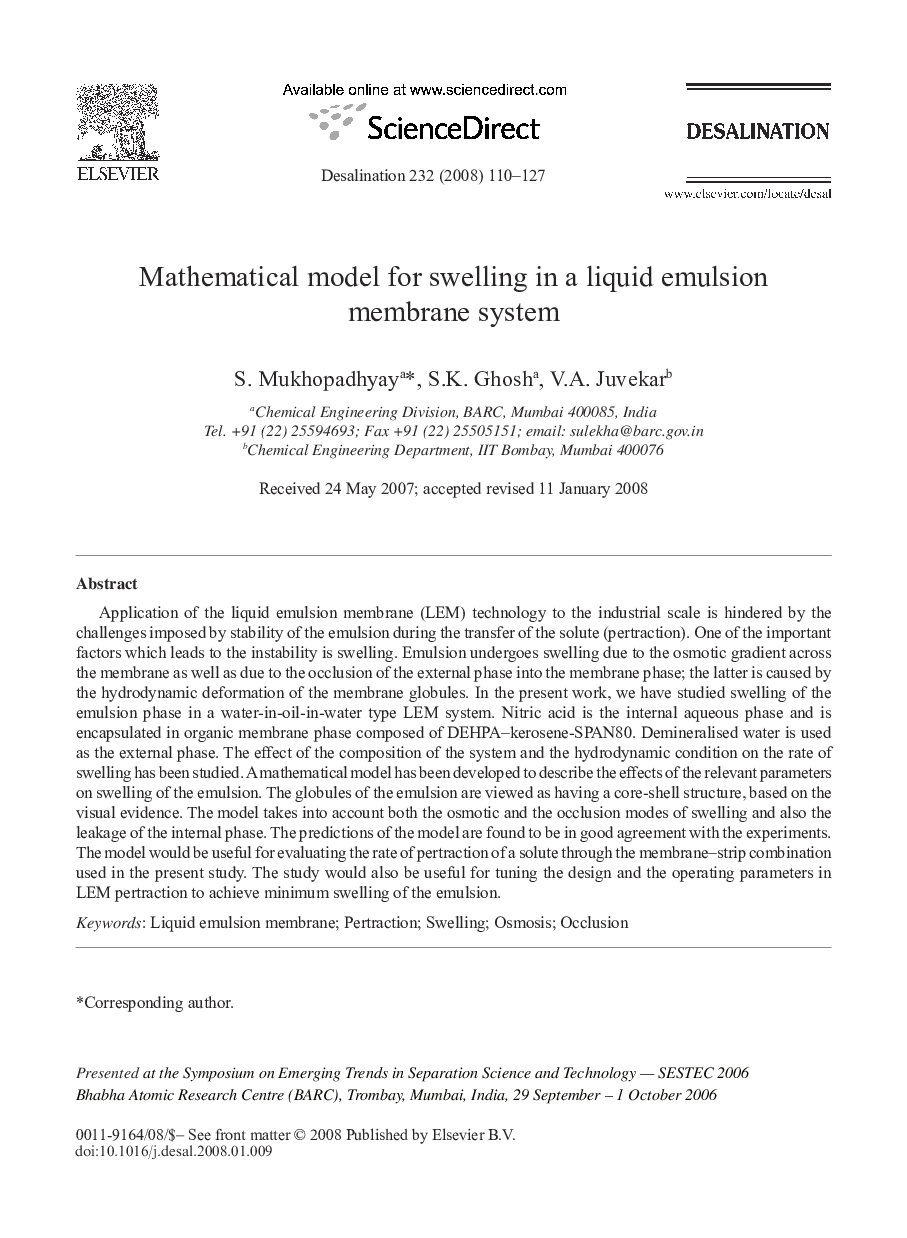| Article ID | Journal | Published Year | Pages | File Type |
|---|---|---|---|---|
| 626862 | Desalination | 2008 | 18 Pages |
Abstract
Application of the liquid emulsion membrane (LEM) technology to the industrial scale is hindered by the challenges imposed by stability of the emulsion during the transfer of the solute (pertraction). One of the important factors which leads to the instability is swelling. Emulsion undergoes swelling due to the osmotic gradient across the membrane as well as due to the occlusion of the external phase into the membrane phase; the latter is caused by the hydrodynamic deformation of the membrane globules. In the present work, we have studied swelling of the emulsion phase in a water-in-oil-in-water type LEM system. Nitric acid is the internal aqueous phase and is encapsulated in organic membrane phase composed of DEHPA-kerosene-SPAN80. Demineralised water is used as the external phase. The effect of the composition of the system and the hydrodynamic condition on the rate of swelling has been studied. A mathematical model has been developed to describe the effects of the relevant parameters on swelling of the emulsion. The globules of the emulsion are viewed as having a core-shell structure, based on the visual evidence. The model takes into account both the osmotic and the occlusion modes of swelling and also the leakage of the internal phase. The predictions of the model are found to be in good agreement with the experiments. The model would be useful for evaluating the rate of pertraction of a solute through the membrane-strip combination used in the present study. The study would also be useful for tuning the design and the operating parameters in LEM pertraction to achieve minimum swelling of the emulsion.
Related Topics
Physical Sciences and Engineering
Chemical Engineering
Filtration and Separation
Authors
S. Mukhopadhyay, S.K. Ghosh, V.A. Juvekar,
